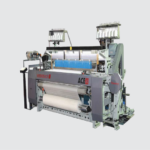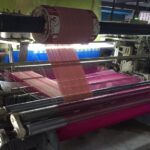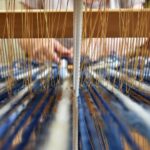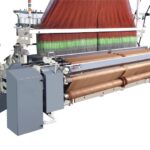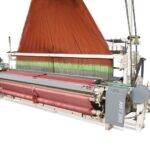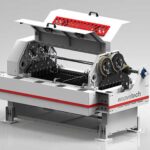Types of Embroidery Machines and their Functions
Types of Embroidery Machines and their Functions
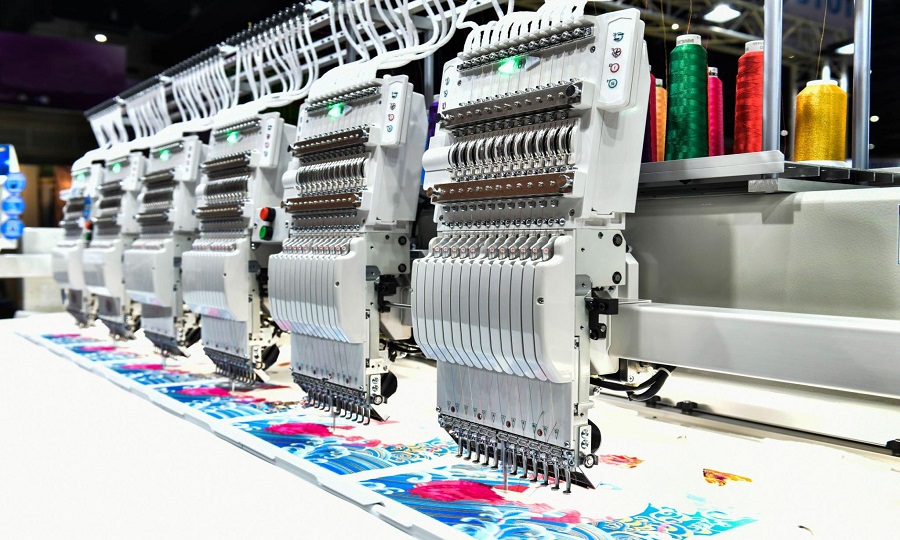
The art of embellishing fabric or other materials with the use of thread or yarn is called embroidery. Moreover, embroidery can use other materials like sequins, beads, pearls, and quills. These days, you can see embroidery on skirts, jeans, golf shorts, caps, headgear, coats, overlays, blankets, dress shirts, and stockings. In embroidery, a vast array of colors and thread types are employed. It’s also utilized for materials for clothes and gifts. Machine embroidery is the term for the technique of creating a pattern on textile material with the use of an embroidery or sewing machine. It is mostly used for corporate advertising, uniform decoration, and product branding (logo). In the fashion sector, it’s also utilized to embellish clothing. Fanciers and craftsmen utilize machine embroidery on garments and home decor to enhance the present. Consider designing wall hangings, quilts, etc. We shall discuss all of the many kinds of embroidery machines in the below section. Additionally, there are contemporary embroidery machines. That is computer-controlled machine embroidery that has been computerized. Weavetech, being the best textile machinery manufacturer in Gujarat, delivers innovation and quality. So why look anywhere else when you can connect with us for innovation and quality.
Mechanical Embroidery Machine
There are other kinds of embroidery machines, but this is the first one that functions similarly to a household sewing machine. Here, the machine uses the needle to pierce the fabric material; the real fabric, needle, and treads are not attached. This machine pulls the stretched thread through the hole to make the embroidery design over the fabric. Additionally, this machine functions just like a standard sewing machine.
Free-motion Machine Embroidery
This kind of free-motion machine embroidery uses a regular zigzag sewing machine to create embroidered motifs. This is primarily utilized for customization, meaning that it has less automation and innovation. The machine’s feeding dog was covered, and a human manipulated the cloth by hand to create a design. The running stitch will be used to make the embroidery. Thicker lines are needed for patterns so that the machine can perform a zigzag stitch. Whatever the design created for this, it is unique and cannot be duplicated exactly. Another name for it is a free-hand sewing machine. Here, visualize the needle as a pencil and use it to create the design on the fabric by moving it in the direction you want.
Cornely Hand-guided Embroidery
Hand-guided embroidery requires one human operator to control the machine’s speed and accuracy while utilizing the artistic ability of a trained embroiderer. Special chain stitch, satin stitch, long and short stitch, cording, and applique may all be produced with this machine. Interior designers are well familiar with this hand-guided needlework. The cost of the embroidered job will vary based on design times, size, intricacy, and size. Following the creation of this machine, individuals realized that more diverse embroidery machine designs were required, which led to the introduction of computer-controlled embroidery machines.
Computer-Controlled Embroidery Machines
All contemporary embroidery machines are solely computer-controlled. The devices we observed in the previous section are sewing machines that also function as embroidery machines. However, these are exclusively meant to be embroidered. With these kinds of machines, the design is pre-programmed into the machine by the program format. The fabric is then put into the hoop, which is then fastened onto the machine. At that point, the machine automatically begins to embroider in accordance with the program. This computerized embroidery machine requires a variety of inputs.
The machine’s straightforward, independent touchscreen interface will let users adjust many parameters, including design, stitch type, stitch length, and other necessary factors. This activity does not require the hiring of professional labor because the machine generates an accurate design based on input instructions. Here, all that is required is the creation of a simple pattern in software, which must then be fed into the machine interface and turned on. The machine will then automatically begin to embroider the fabric, stopping itself if a thread breaks.
1- Single-head embroidery machine: This machine has a single embroidery head, as the name would imply. The machine’s arms move in accordance with directions, and the embroidery head remains stationary. This device will have seven to fifteen needles. operating at a speed of roughly 300–1000 stitches per minute (the machine’s manufacturer may have an impact on the number of needles and stitches per minute).
2- Multi-head embroidery machine: This machine has a single embroidery head, as the name would imply. The machine’s arms move in accordance with directions, and the embroidery head remains stationary. This device will have seven to fifteen needles. operating at a speed of roughly 300–1000 stitches per minute (the machine’s manufacturer may have an impact on the number of needles and stitches per minute).
3- Schiffli embroidery machine: These devices are used in the Schiffli product line. The fabric that requires embroidery is fed into the Schiffli machines vertically, which is a unique characteristic that is achieved entirely through the use of a device. The method of stitching will be horizontal needle entry. At the same height, every needle is positioned in a straight line and simultaneously pierces the fabric. Here, the cloth is gripped, and as it moves both horizontally and vertically, a design is eventually created on the fabric. Two textiles in total can be treated. Due to the individual handling of each needle, color shift is possible. Depending on the type of machine, 2200 needles can be inserted into fabric in a single shot.
Transform your textile operations with Weavetech, your gateway to the best textile machinery in Gujarat. Elevate your production standards and efficiency. Choose Weavetech for cutting-edge technology and unmatched quality. Seize the opportunity to enhance your textile business contact us now to weave success together.

